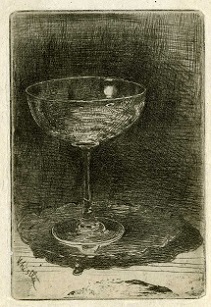Reflecting Devotion: Lustrous Materials in England, Scotland, and Ireland 1603–1700
Catherine Evans (Leverhulme Early Career Research Fellow, The University of Manchester)

This Leverhulme Trust funded project combines cultural history and literary studies to examine how lustrous materials – pearls and glass - transformed seventeenth-century devotional practices. Pearls and glass were both globally traded, luxury goods: one naturally occurring, the other man made. The early modern pearl trade was characterised by extraordinary exploitation, devastating the ecology of Caribbean fisheries and subjecting thousands of enslaved divers to horrific injury, and drowning. Meanwhile, the production of glass led to widespread deforestation and drove colonial land grabbing.
In both religious and scientific writing, pearls and glass were objects of curiosity and wonder. Anne Conway asked ‘Chrystal ... is so hard and solid, how can it receive so many Bodies and transmit them so easily through it?’ Similarly, pearls were seen as proof of God’s mysterious works, as the shining jewels emerged out of the mud of the sea. This innovative work investigates radiant aesthetics through the study of literary texts, decorative objects, utilitarian goods, and architectural space, countering the critical prejudice that pearls and glass are suspiciously frivolous, gaudy, or superficial.
This project draws on the expertise of the John Rylands Research Institute imaging department, who have developed cutting-edge techniques that can reveal how objects have been altered over time. Reflecting Devotion asks if “new” images of old objects can reveal new information and ways of seeing. This anachronistically reflects the debates around sight that took place in the seventeenth century: Protestant practice held that careful contemplation of external objects could lead to divine knowledge whilst the ‘New Science’ of Bacon and Hobbes was predicated on practices of careful observation.
